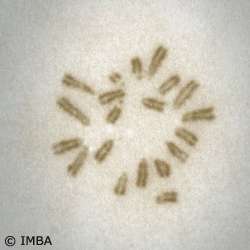Scientists solve ricin riddle using new technology

A protein that controls how the deadly plant poison and bioweapon ricin kills has finally been identified by a team of Austrian researchers in a new study. With a combination of stem cell biology and modern screening methods, the team were able to get to the bottom of how the poison works.
One of the deadliest plant based poisons in the world, ricin has frequently hit the headlines due to its association with terrorism. Everyone from Al Quaida to the United States Army in the First World War has been reported to have tested ricin's potential as a chemical warfare agent.
And although it only takes a tiny amount of the poison to induce the onset of death within two to three days of entering the bloodstream, this deadly poison can easily be bought down at your local market as it comes from the seemingly innocent castor oil bean, and until now no antidote has been found.
Step in the Austrian team from the Institute for Molecular Biotechnology (IMBA) at the Austrian Academy of Sciences in Vienna. These researchers have identified a protein molecule called Gpr107 that is essential for the deadly effect of ricin. In other words, cells which lack Gpr107 are immune to the poison.
One of the researchers on the study, published in the journal Cell Stem Cell, Ulrich Elling comments: "Our research suggests that a specific antidote could now be developed by making a small molecule to block the Gpr107 protein."
As new technology means the entire mammal genome can now be screened for mutations quickly, researchers today can find out in a few weeks what scientists have been puzzling over for decades.
Normally screening methods focus on finding one single mutation by studying the effects of removing a single gene, technique that is not always efficient.
Josef Penninger comments on how their new technique could be a revolution in biomedicine.
"We've now succeeded in combining the genetics of yeast, which has a single chromosome set that allows instant gene mutation, with stem cell biology. For decades researchers have been looking for a system in mammals which would allow scientists to reconstruct millions of gene mutations simultaneously. We have solved the puzzle and even broke a paradigm in biology - we managed to make stable mouse stem cells with a single set of chromosomes and developed novel tools to use such stem cells to rapidly check virtually all genes at the same time for a specific function. The possible uses of this discovery are endless. They range from fundamental issues, like which genes are necessary for the proper function of a heart muscle cell, to concrete applications as we have done in the case of ricin toxicity."
More information: Elling, U., et al. (2011) Forward and Reverse Genetics through Derivation, of Haploid Mouse Embryonic Stem Cells. Cell Stem Cell. DOI: 10.1016/j.stem.2011.10.012
Journal information: Cell Stem Cell
Provided by CORDIS
















